AI-based marketing automation uses artificial intelligence to plan and run everyday marketing work. Software studies customer actions, predicts good timing, and picks the most suitable channel for each message. It can schedule emails, set ad targets, reply in chat, and move leads through steps without constant effort. The system keeps learning from results and adjusts campaigns bit by bit. This reduces repetitive tasks and cuts human error.
Teams spend time on ideas, content, and offers. You also get useful reports that show what works and what does not. Across email, social, ads, and websites, the process becomes steady and responsive. In short, machine learning and marketing automation with AI help brands speak to the right people, at the right moment, with fewer clicks and stronger results.
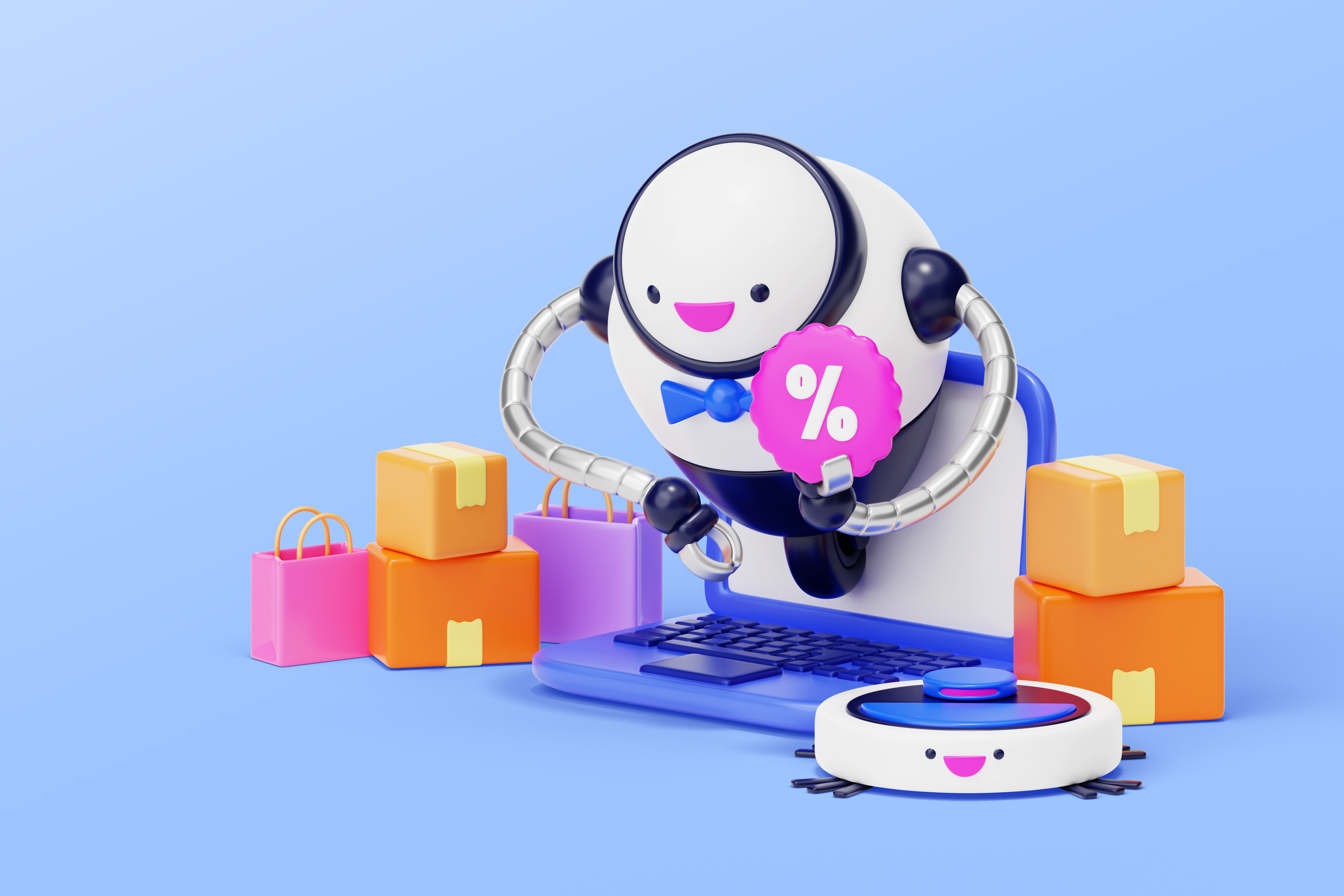
Benefits of AI in Marketing Automation
Marketing automation and artificial intelligence bring focus and speed to daily marketing work. It helps teams act on facts, test ideas, and adjust campaigns without long delays. Used well, an AI automation agency can reduce waste and make each contact with a customer more timely and relevant. Benefits of AI in marketing include:
- Personalisation at scale. AI groups people by interests and behaviour, then selects content that fits. Messages feel closer to each person, which increases response and loyalty.
- Smarter timing. The system studies open rates and clicks, then finds hours when people react. Better timing lifts reach without more spend.
- Higher quality leads. By tracking actions across forms, emails, and pages, AI scores interest and flags buyers who are ready to talk. Sales teams focus on contacts that matter.
- Lower manual effort. Scheduling, audience updates, and reporting run in the background. Staff avoid repetitive work and keep attention on planning and creative tasks.
- More consistent testing. AI can run many small experiments and keep the winners. Teams learn what works faster and with less guesswork.
- Cost control. Better targeting and timing reduce ad waste and cut send volumes that add little value. Budgets stretch further. Marketing automation optimizes ROI.
- Cross-channel harmony. AI keeps tone and offers aligned across email, ads, site, and chat. People see a joined-up journey instead of mixed messages.
- Fewer errors. Automated checks catch missing links, wrong segments, or broken rules. Campaigns go out clean more often.
- Simpler reporting. Clear metrics show reach, engagement, and revenue by channel and audience. Teams share results without complex tools.
- Grows with you. As lists and campaigns grow, AI handles the load without a drop in quality. Small teams can run programs that once needed many hands.
- Forecasting. Simple predictions help plan send volumes, discounts, and stock. Teams prepare for peaks instead of guessing at the last minute.
Taken together, these gains make marketing calmer, clearer, and more effective.
AI-Driven Marketing Automation Tools
Smart marketing tools now use artificial intelligence to plan, send, and improve campaigns with less manual work. The goal is simple. Reach the right person with the right message at a good moment. Below are eight well-known options. Each one has a different focus. You will see who they fit, why people pick them, and short pros for quick review.
1) HubSpot Marketing Hub
HubSpot brings marketing and customer records into one place. The AI for marketing automation helps with send time, subject line ideas, lead scoring, and routing leads to sales. The main difference is the tight link between email, forms, ads, and the built-in customer database. You plan, publish, and track without switching tools.
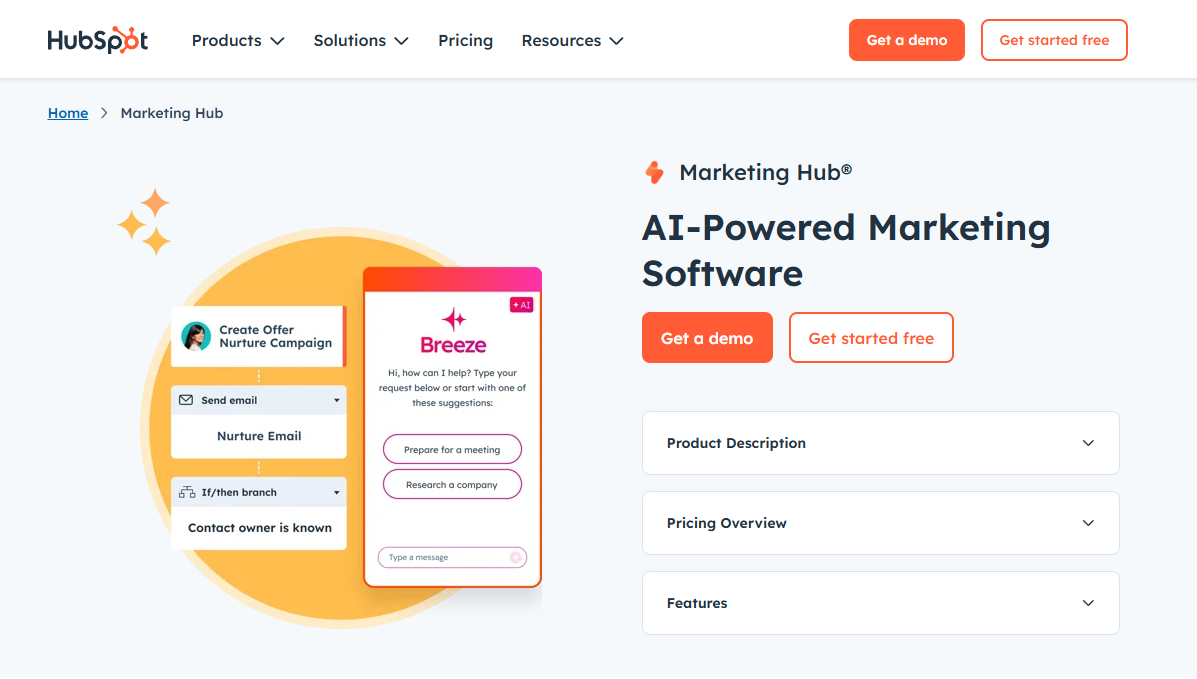
Who it suits: Teams that want one platform for marketing and customer management. Works well for small and mid-sized firms that plan to grow.
Why use it: A single view of contacts makes follow-up simple. The AI learns from past actions and adjusts timing and content.
Pros
- Strong link between CRM and marketing
- Easy automation builder
- Lead scoring that gets better over time
2) ActiveCampaign
ActiveCampaign focuses on personal communication at scale. It watches clicks and page visits, then moves people through email and SMS paths based on what they do. The main difference is how flexible the paths are. You can build many small steps and rules without a heavy setup.
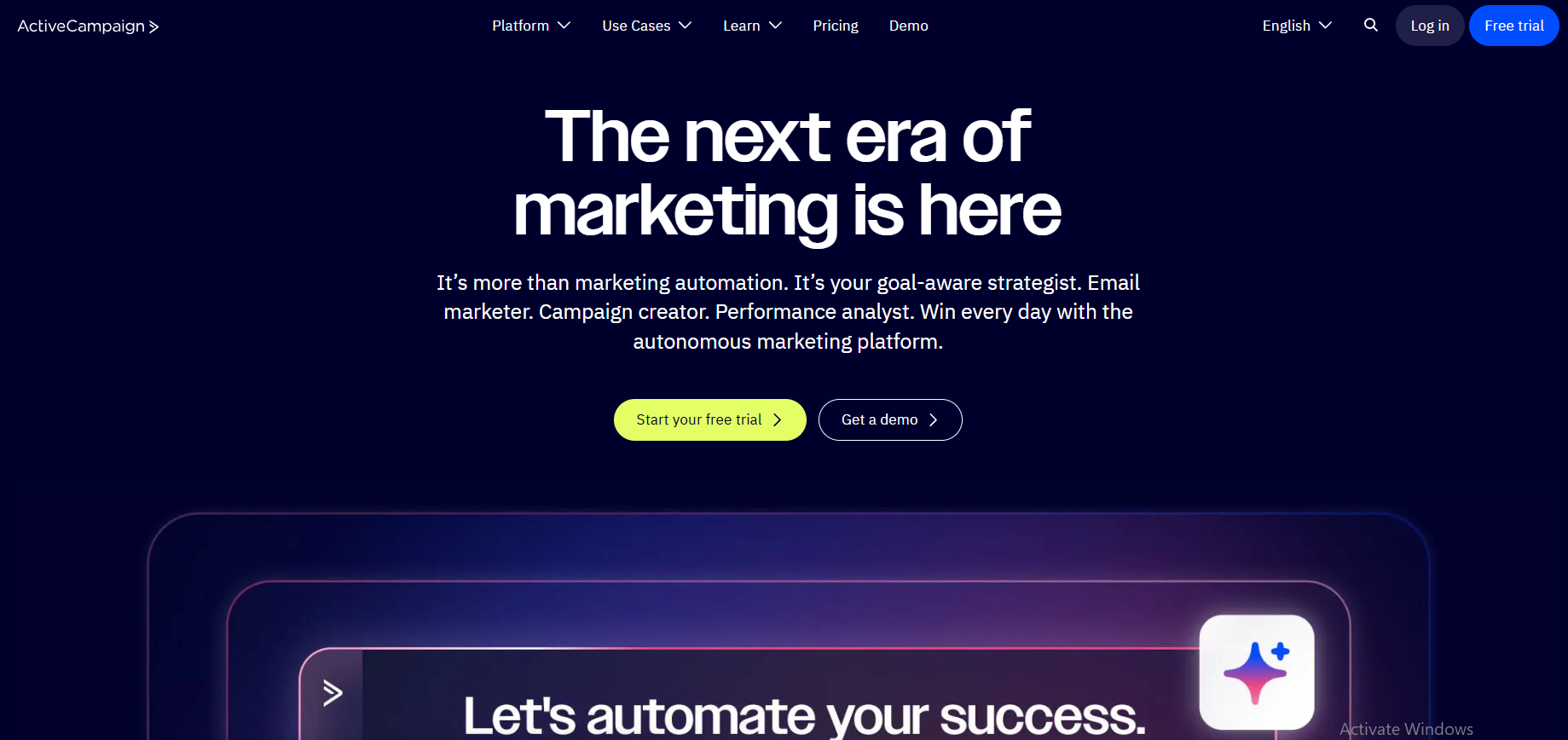
Who it suits: Small and mid-sized companies that need rich journeys without a big team.
Why use it: It delivers clear, behavior-based flows and helps nurture leads until they are ready to buy.
Pros
- Detailed yet simple journey maps
- Good send time and content suggestions
- Wide library of integrations
3) Salesforce Marketing Cloud
Salesforce adds its AI, called Einstein, to large-scale campaigns. It predicts who will open, click, or buy, and suggests the next step. The difference here is scale. It can run email, mobile messages, ads, and site content for very large lists.

Who it suits: Enterprises and global brands with many channels and complex rules.
Why use it: Deep personalisation across channels with one profile for each person. Strong support for compliance and team roles.
Pros
- AI predictions for next best action
- Cross-channel campaign control
- Detailed reports for leadership
4) Mailchimp
Mailchimp is known for a simple setup. The AI recommends subject lines, audiences, and send times. It now includes basic journeys, ads, and stores. The difference is ease. You can ship campaigns fast, even if you are new to automation.

Who it suits: Solo founders, freelancers, and small shops that want quick wins and clear pricing.
Why use it: It lowers the entry barrier. You can test ideas, grow a list, and keep costs in check.
Pros
- Very easy to start
- Helpful AI tips inside the editor
- Fair pricing for early stages
5) Marketo Engage
Marketo sits inside Adobe’s suite and goes deep on lead nurturing. This AI tool for marketing automation tracks many touches over long sales cycles and passes qualified leads to sales. The difference is its strength in B2B journeys, where one deal might take months.
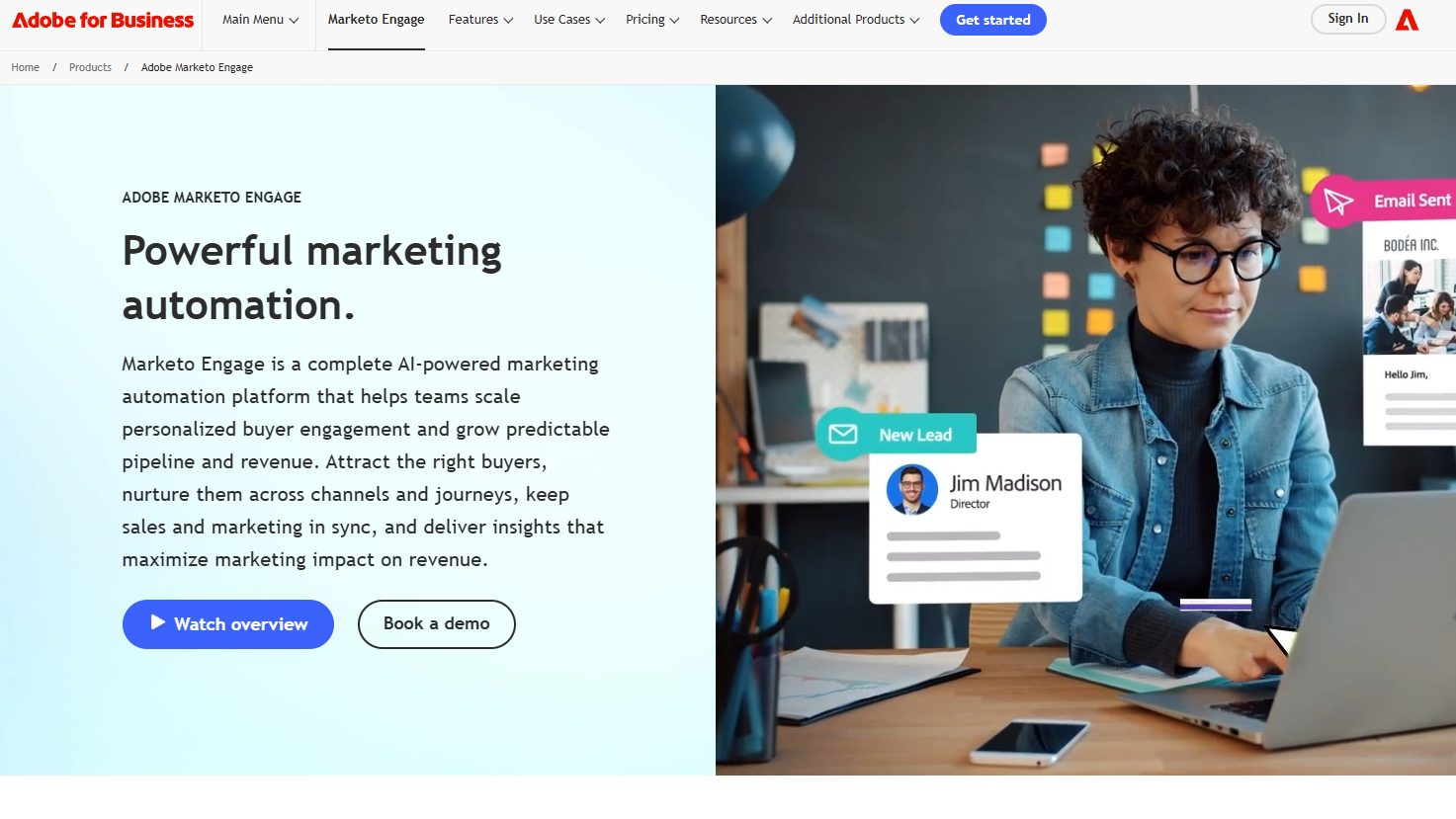
Who it suits: Mid to large B2B firms with sales teams and complex handoffs.
Why use it: Strong scoring, content suggestions, and account-based tactics help move deals forward with steady, relevant contact.
Pros
- Powerful lead scoring and grading
- Content recommendations based on past wins
- Good links to Adobe tools
6) Klaviyo
Klaviyo focuses on online stores. It plugs into platforms like Shopify and pulls in purchase history, browsing, and cart events. The difference is retail focus. Flows such as welcome, cart recovery, and post-purchase are ready to use and easy to tweak.
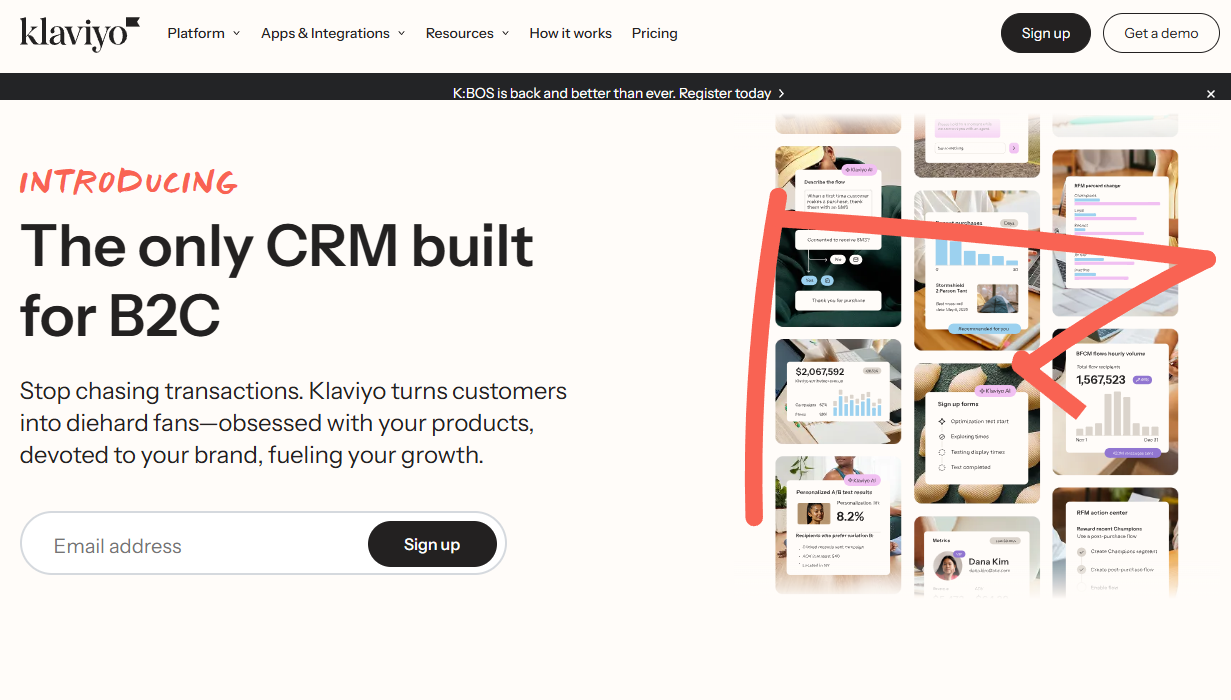
Who it suits: E-commerce brands that care about repeat sales and customer lifetime value.
Why use it: Clear revenue tracking by flow and audience. AI helps pick the send time and product blocks that match each shopper.
Pros
- Strong store integrations
- Ready-made flows for retail
- Product and revenue reports that are easy to read
7) Braze
Braze runs messaging for apps and sites at speed. It handles email, push, in-app, and SMS with real-time triggers. The difference is event speed and mobile depth. Messages can go out the moment a user acts.
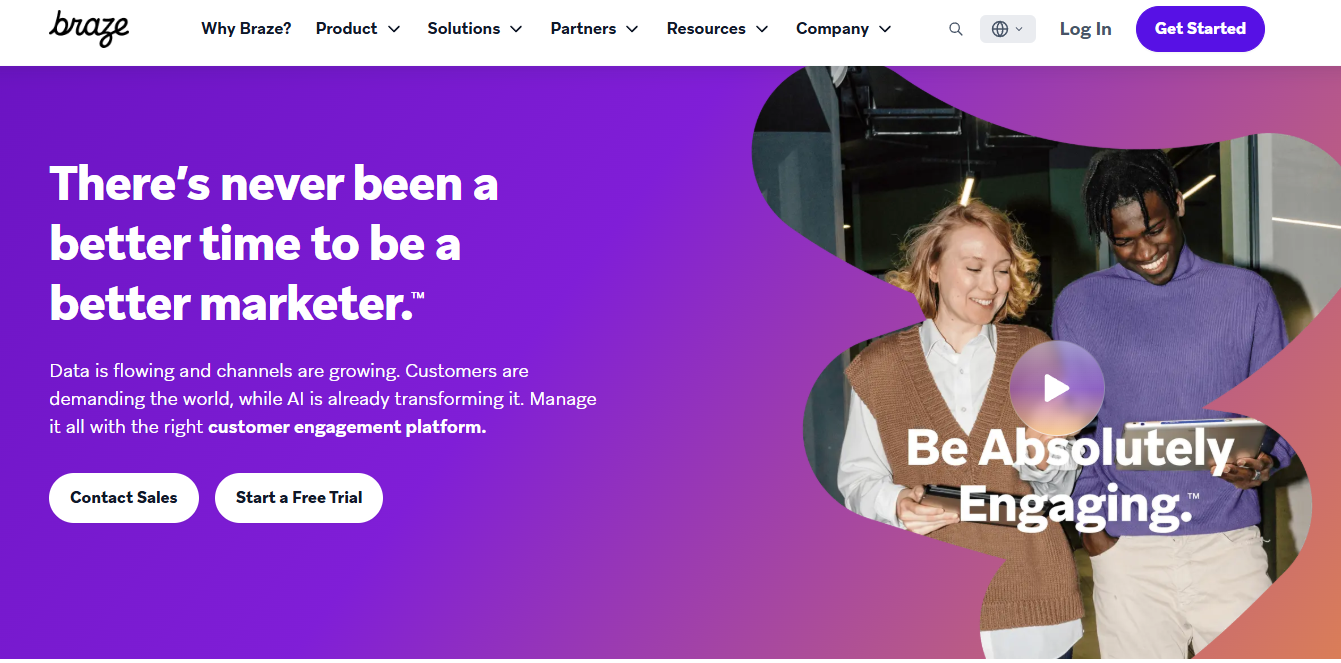
Who it suits: Apps, SaaS products, media platforms, and any brand with heavy mobile use.
Why use it: You can react to behavior in seconds, test variations, and keep users active with timely nudges.
Pros
- Real-time triggers at scale
- Strong mobile and app features
- Clear testing and audience tools
8) Customer.io
Customer.io gives fine control over behavior-based messages. You send based on events like signup, upgrade, or feature use. The difference is the focus on product signals rather than broad lists.
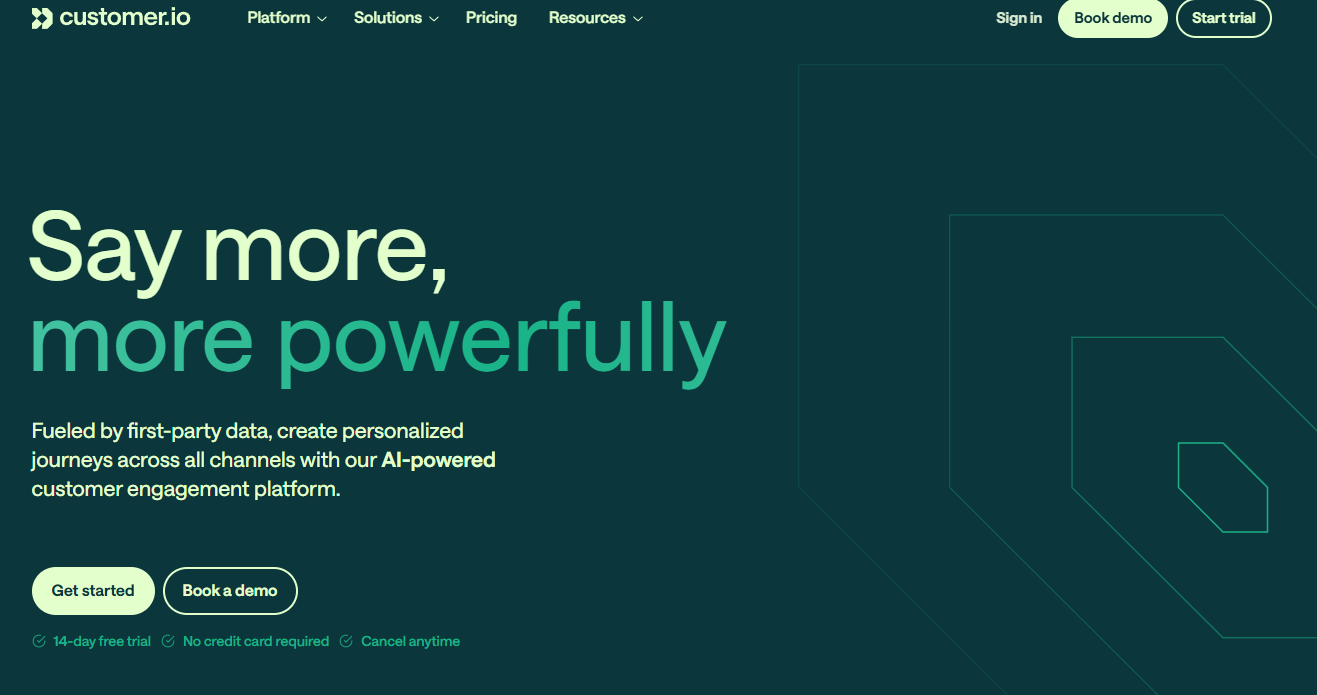
Who it suits: SaaS and digital products with clear in-app actions and frequent releases.
Why use it: It turns product events into simple, targeted messages that guide users to value moments.
Pros
- Flexible event-based logic
- Good developer options without heavy overhead
- Clean editor and testing tools
How They Differ at a Glance
While all eight use AI, each one leans in a different direction.
- All in one with CRM: HubSpot. Good when marketing and sales must share one record and one timeline.
- Flexible journeys for small teams: ActiveCampaign. Quick to set rules and paths.
- Enterprise scale and controls: Salesforce Marketing Cloud. Fits big teams and strict processes.
- Beginner-friendly: Mailchimp. Launch fast and learn as you go.
- Deep B2B nurturing: Marketo Engage. Longer cycles and account-based focus.
- Retail repeat sales: Klaviyo. Built for stores with product feeds and clear revenue views.
- Real-time mobile focus: Braze. Great for apps and media where timing is key.
- Product-led messaging: Customer.io. Messages tied to in-app events and user steps.
Pick the AI-powered marketing automation tool that matches your sales model and the skills you have today. Add features as you grow. AI helps with timing, content choices, and audience grouping. The right platform turns those gains into steady results without adding noise.
Marketing Automation Using AI Examples
Many well-known companies use AI automated marketing to manage and improve their marketing:
- Amazon. Amazon suggests products based on what people view and buy. The system looks for similar items and updates emails and on-site blocks with fresh picks. This keeps shoppers active and boosts repeat orders.
- Netflix. Netflix personalises title images and rows to spark a click. The team runs constant tests to find which artwork and layout work best for each viewer. This automation lifts viewing time and keeps people engaged.
- Starbucks. Starbucks uses its AI-powered marketing automation to send offers in the app based on purchase history, time, and location. Recommendations appear before a customer orders, which nudges add-ons and repeat visits.
- Sephora. Sephora’s Virtual Artist lets shoppers try makeup on a phone and get shade matches. The brand also launched chat tools that book in-store makeovers and recommend products. These features reduce friction from choice and speed up checkout.
- Spotify. Spotify creates automated playlists such as Discover Weekly. The service studies listening habits, then delivers fresh tracks each week, which keeps subscribers returning and exploring new artists.
The Future of AI Automation in Marketing
Tools will predict needs earlier and adjust messages in real time across email, apps, ads, and stores. Expect more privacy-safe methods that work with first-party signals, plus simple controls for users to shape the experience. Brands will focus on useful prompts instead of broad blasts, with smaller tests running all the time.
Marketing automation and AI are already part of major companies. The pattern is clear. Timely, relevant prompts drive action. As the tech improves, the best results will come from clear goals, careful testing, and a steady focus on customer needs.


